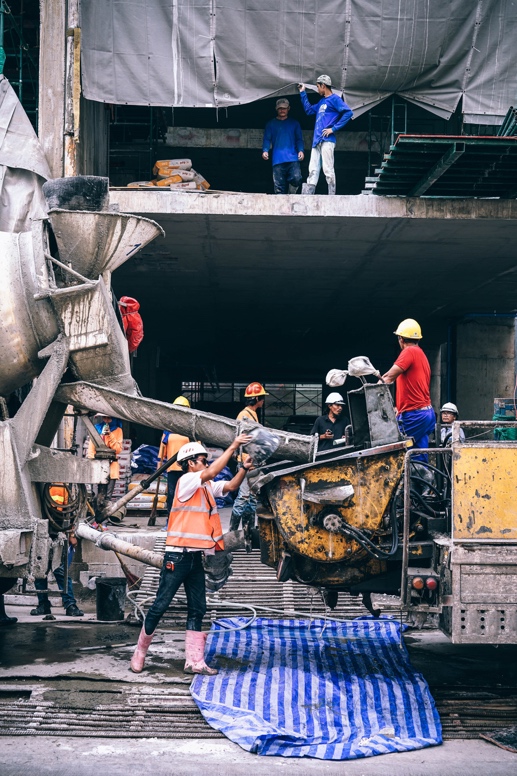
CIVIL ENGINEERING & RECYCLED TIRES
Each year, millions of scrap tires are generated around the world. Improper disposal of old tires can lead to environmental and health issues. Burning releases toxic fumes that pollute the air and contaminate soil and water. Landfills are breeding grounds for mosquitoes and other pests, which can carry and cause diseases. The good news – in Ontario, scrap tires are never burned or disposed of in landfills. Instead, industries are finding new and innovative ways to use the material created when old tires are recycled.
EXCITEMENT IS BUILDING
Many civil engineering applications require large volumes of materials. But when conventional building materials are replaced with products made from recycled tire rubber, natural resources and energy are preserved. Using recycled rubber derived from scrap vehicle tires in civil engineering applications such as concrete production represents an effective technique for using huge volumes of waste materials safely. This reuse promotes the development of eco-friendly buildings and encourages the concept of sustainable production, which is receiving greater attention.
THE BENEFITS
The low density of rubber aggregate compared to a conventional aggregate can significantly contribute to the development of semi-lightweight and lightweight concrete, which helps to reach a more economical design. The development of self-consolidating rubberized concrete combines the beneficial effects of rubber aggregates and the desired properties of self-consolidating concrete, such as spreading and filling the formwork under its own weight without applying vibration, which can fix the problem of concrete flowing through congested reinforcements.
WHERE RECYCLED RUBBER MEETS THE ROAD
The use of rubberized asphalt as a pavement material was pioneered in the 1960s. Since then it has garnered interest for its ability to reduce road noise. In fact, asphalt rubber is the largest single market for ground rubber in the US, consuming an estimated 220,000,000 pounds (100,000,000 kg), or approximately 12 million tires annually.
MAKING THE GRADE
Significant research has led to the use of shredded and/or crumb rubber as a replacement for coarse and/or fine aggregate in a variety of civil engineering projects. These studies indicate that utilizing rubber aggregate is a viable option for enhancing the durability, strain capacity, impact resistance, and energy absorption of concrete and asphalt.
